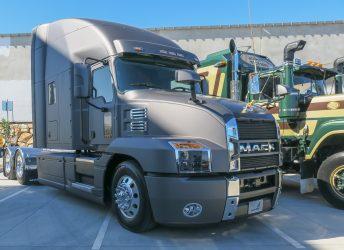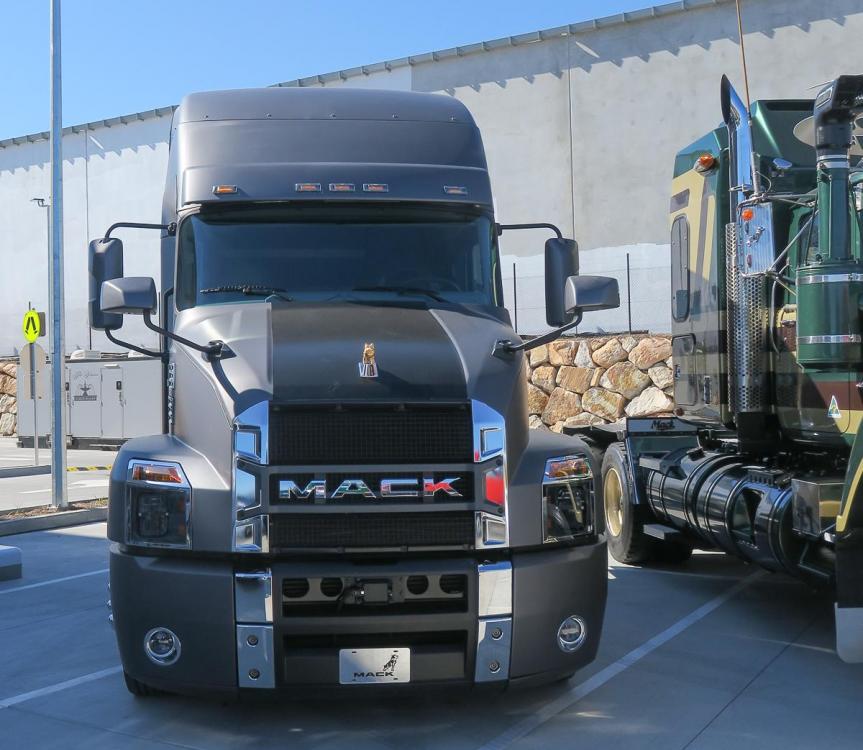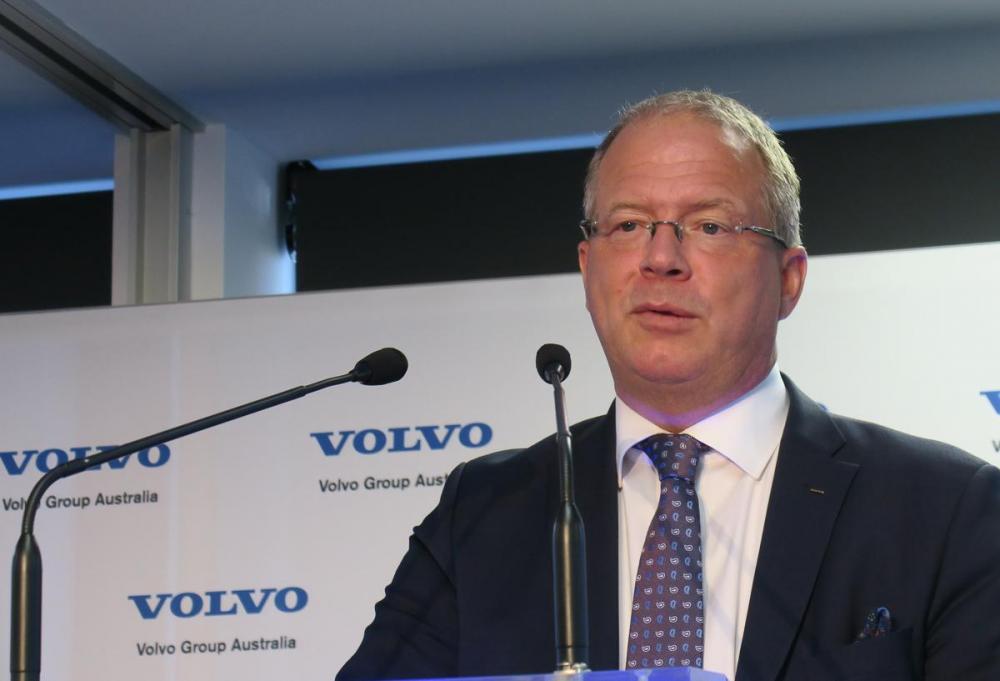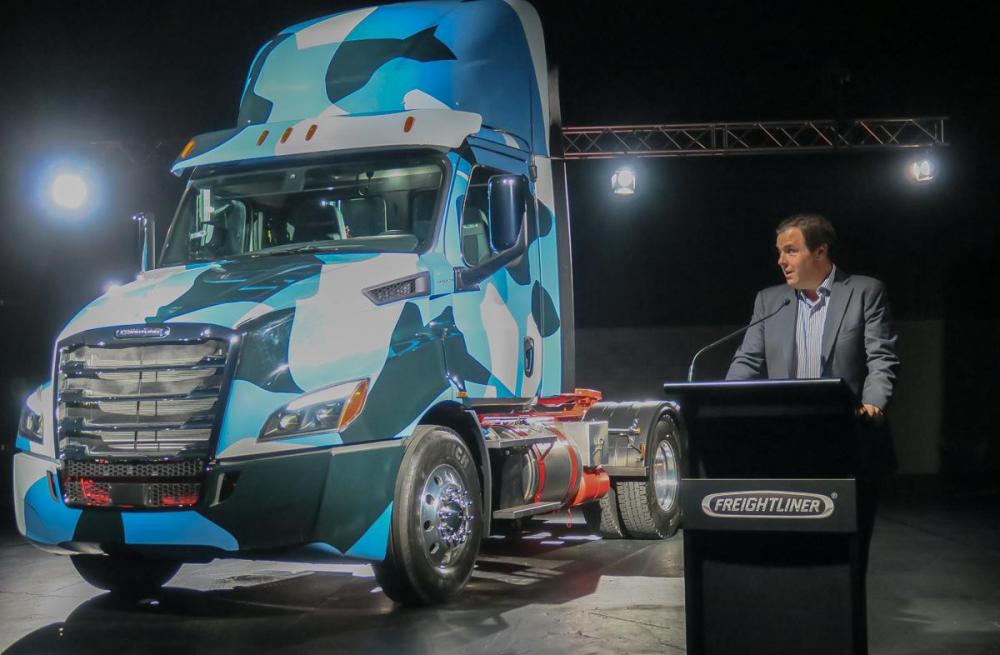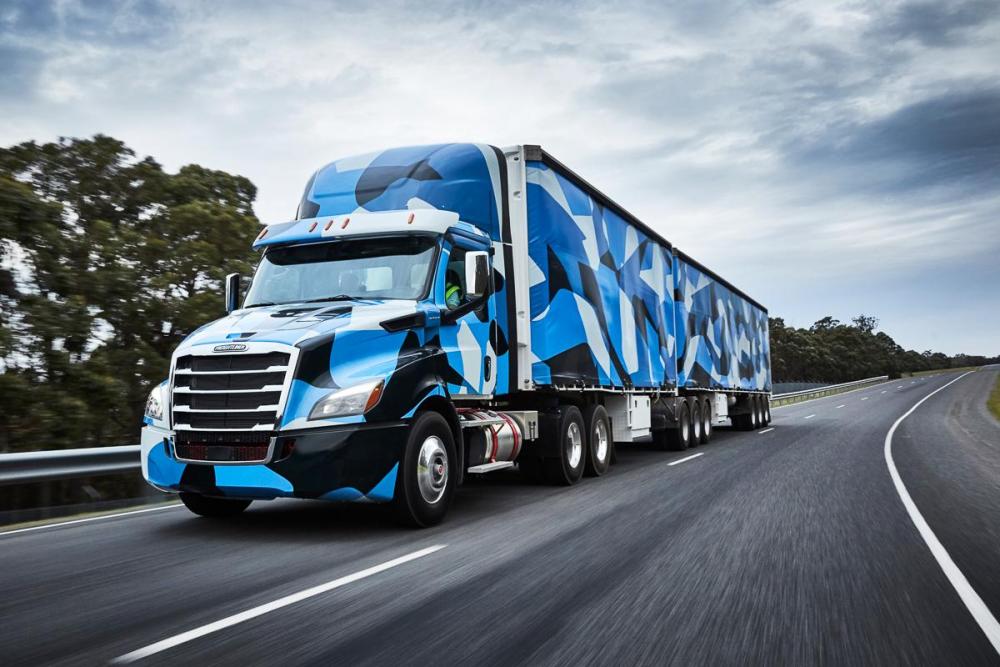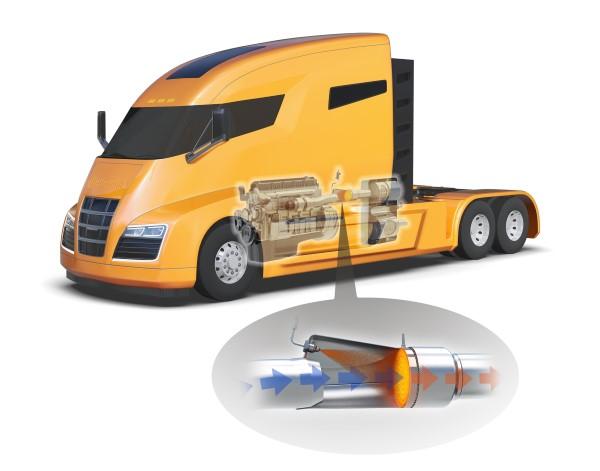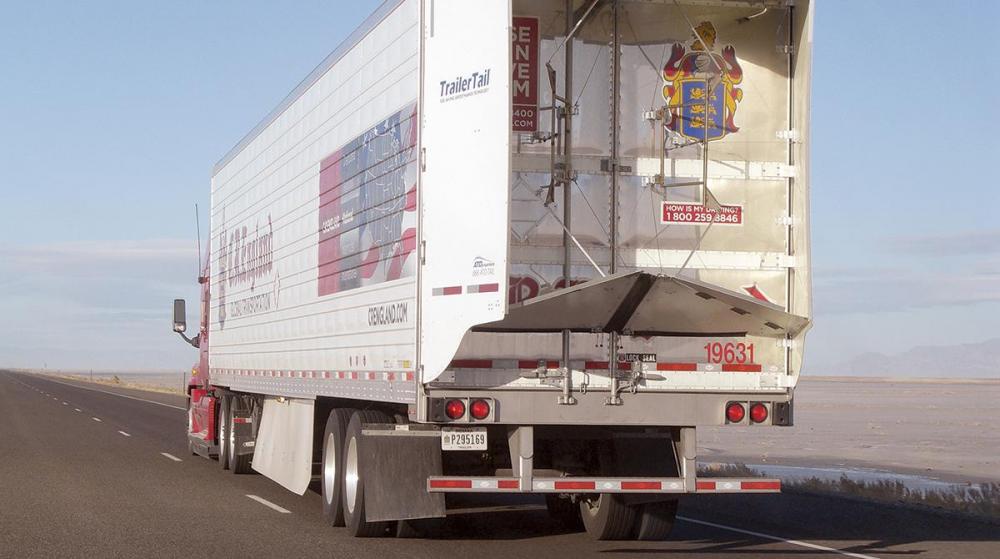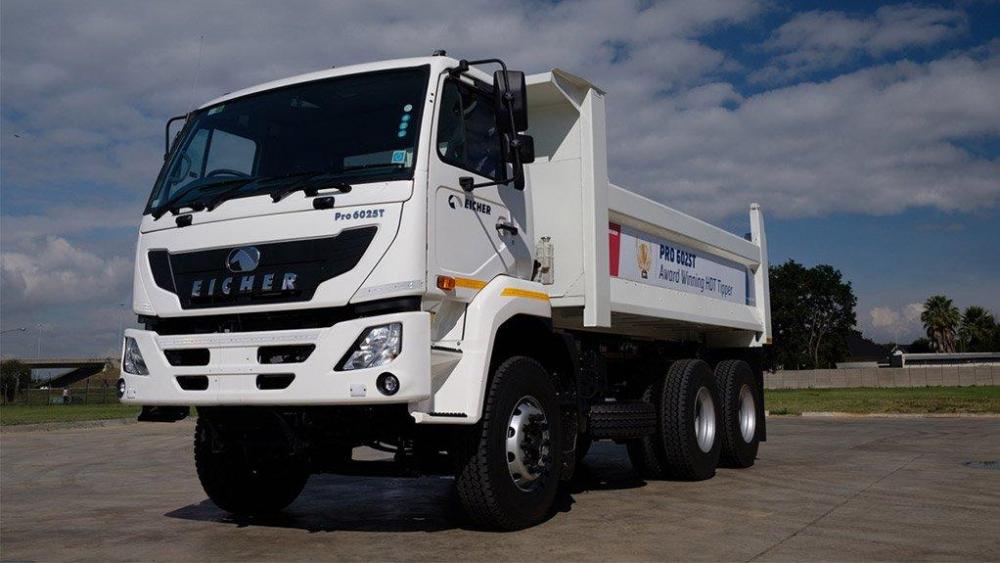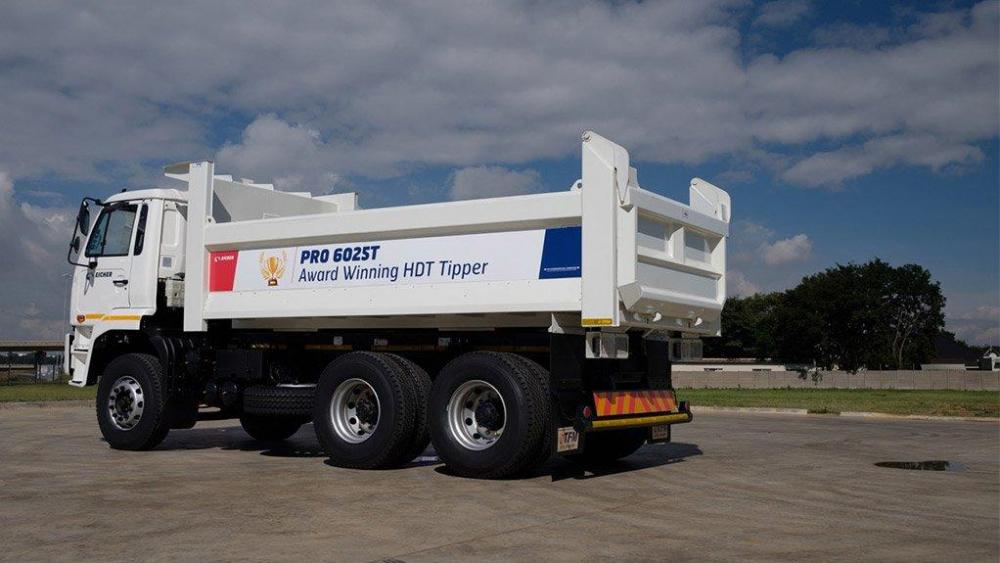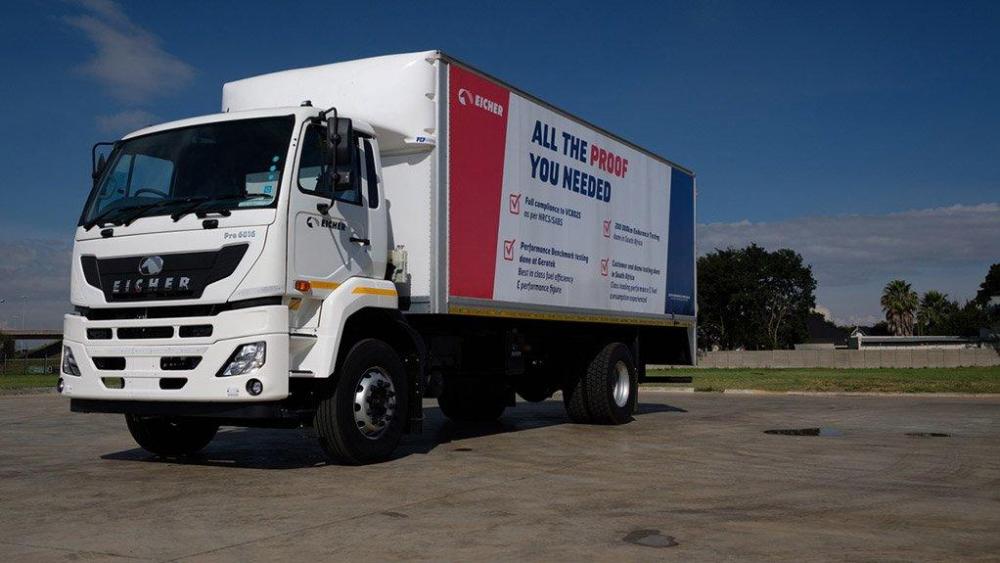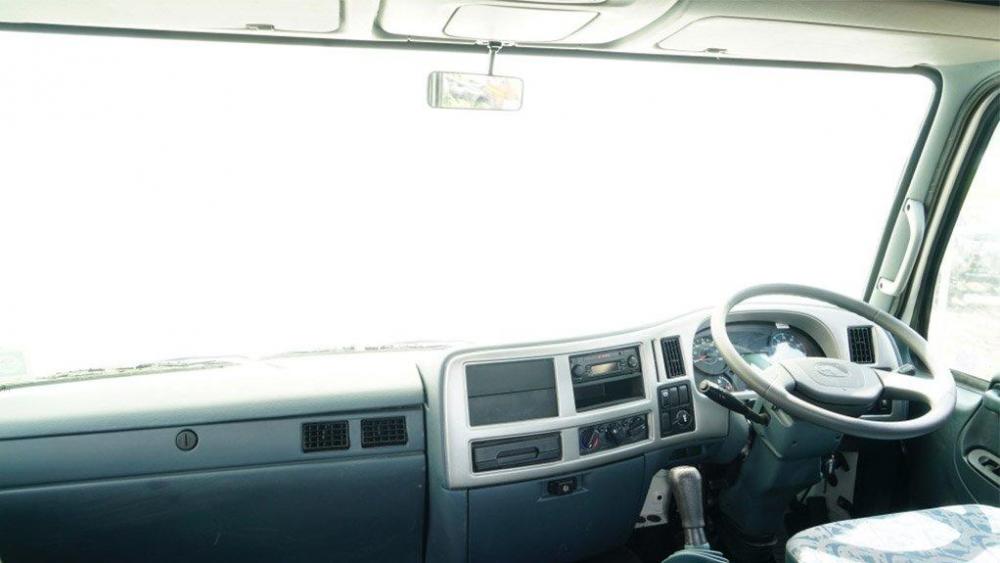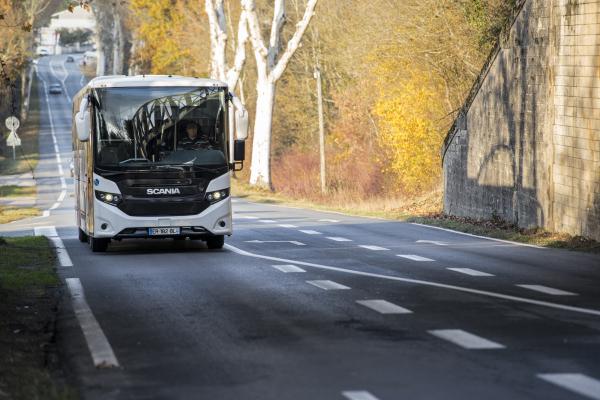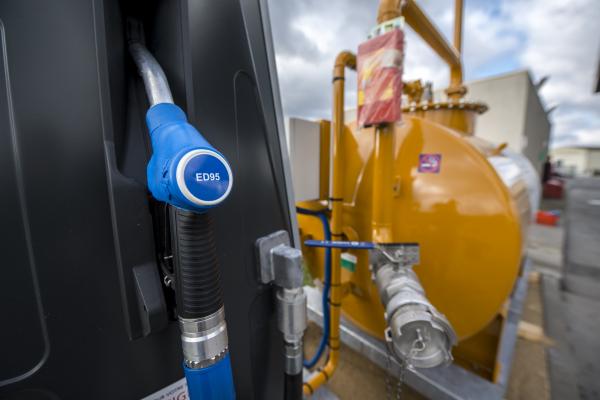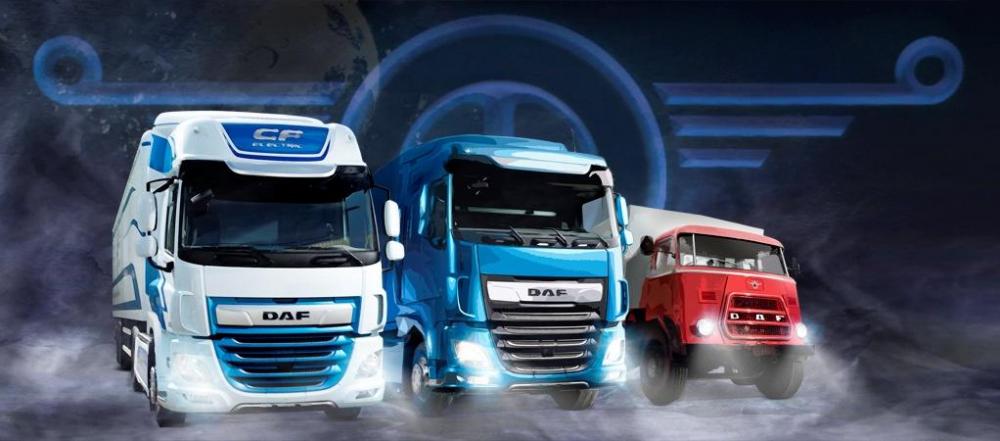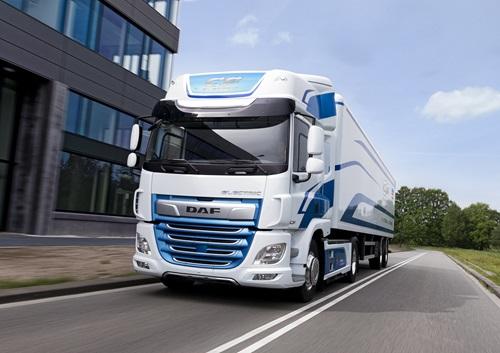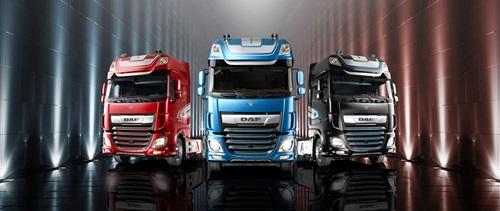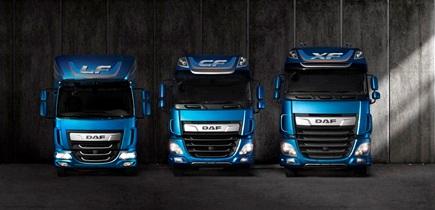
kscarbel2
Moderator-
Posts
18,868 -
Joined
-
Days Won
114
Content Type
Profiles
Forums
Gallery
Events
Blogs
BMT Wiki
Collections
Store
Everything posted by kscarbel2
-
Owner-Driver / August 29, 2018 We take you for a walk-around tour of the iconic Kenworth Dealer Hall of Fame in Alice Springs, with more than 25 of the brand’s most memorable trucks on offer. From Australia’s first locally-built K125CR ‘Grey Ghost’, to the new Legend 900, and even the lesser-known T2000, the museum really does have a Kenny for everyone. After an expansion in 2015 the whopping 4,000sqm display was named the JJ Hurley Pavilion, after the industry great and former Brown and Hurley Group managing director was inducted onto the Shell Rimula Wall of Fame. As well as the various trucks and engines on show, the museum also exhibits a rich historical overview of the Kenworth story down under. It’s certainly a special place and one every truck enthusiast should visit at least once! Video Link - https://www.ownerdriver.com.au/industry-news/1808/kenworth-museum-video-tour-from-grey-ghosts-to-9ohs
-
-
Diesel News Australia / August 2018 The grand opening of the new Volvo national HQ saw the first Mack Anthem in Australia on the forecourt as the guests made their way into the event. The new facility was officially opened by Queensland Premier, Annastacia Palaszczuk, and Volvo Group Global President and CEO, Martin Lundstedt. The company’s new $30 million Australian headquarters and Brisbane South dealership accommodates modern offices, a large dealership (selling Volvo, Mack and UD Trucks) and a contemporary workshop on a 33,000 m3 site at the Metroplex Westgate business park. The Mack Anthem is not destined for Australian roads just yet. The truck on display was one of the first prototypes built for the truck’s launch in the US last year. It has been brought over to give potential customers an idea of the look and feel of the new model. The fact is it does look impressive in the metal, despite looking a little ‘Transformerish’ in many photos. Volvo also announced further investment to upgrade its Queensland truck factory at Wacol, near Brisbane. Martin said refurbishment of the Wacol truck plant will enable the Group to further increase production, signalling the company’s strong outlook. “Our increase in market share towards 27 per cent over the past five years, in combination with a strong heavy-duty truck market, makes it necessary to further increase our production capacity,” said Martin. “In the past five years alone, production at our Wacol factory has increased by 40 per cent. Investing in the Wacol factory, not far from our new national headquarters, will help grow our 27 per cent market share and give a boost to around 85 local component suppliers “Volvo Group Australia has been making trucks in Queensland since 1972 and we are extremely confident in the Australian market, we employ more than 1500 people across the country and have produced more than 60,000 trucks from the Wacol factory.” Welcoming the announcement, Annastacia Palaszczuk said the Wacol plant was a significant part of the state’s manufacturing base, employing almost 500 people. “Volvo Group is the only truck manufacturer to be awarded ‘Australian Made’ certification, and we’re particularly proud to call them Queensland-made,” said the Queensland Premier. “Their commitment to the State is a vote of confidence in our future and testament to the State’s economic strength.” For Volvo Group Australia President, Peter Voorhoeve, this was his last official function before taking leave of Australia and heading to the US to take over as President of Volvo Trucks North America. “The new headquarters is an energising space which will inspire our people on to greater things.” said Peter. ”The main building’s seven metre glass hangar door and 125 metre atrium were specially engineered to allow heavy vehicles inside, while the central staircase reflects a DNA helix shape linking each level.” .
-
Cascadia is Coming to Australia Diesel News Australia / August 2018 After a long gestation period and some false starts, the Freightliner Cascadia is coming to Australia. In fact, there are already Cascadias on the ground, as part of an ongoing development and evaluation program. Diesel News attended an unveiling of the new models in a darkened film studio in Melbourne. Ever since the introduction of the Cascadia on the US market, back in 2007, there has been a lot of speculation about if and when the model would be introduced to Australia. There was talk of the truck being unsuitable for Australia. In North America it is sold as a mass-produced highway truck used as a generic prime mover to haul the standard trailers on smooth interstate highways at masses below 40 tonnes. Freightliner in Australia had persisted with the older model designs like the Argosy, Coronado and Columbia. These are based on a vehicle platform which predates the development of the Cascadia. The design of which integrates many more global elements in the design, which are common across the Daimler truck family. The success of the Cascadia in North America has seen Freightliner regain number one status right across the heavier end of the market, as it continues to grow market share to over 40 per cent in the heavy duty prime mover market. US interstates are populated with processions of Cascadias with a few competitor brands sprinkled into the mix. A completely new Cascadia was launched onto the US market last year bringing the whole vehicle platform bang up to date and Freightliner in the US is claiming fuel improvements up to eight per cent for operators, over the previous model. “The business case of the truck is unquestionable,” says Daniel Whitehead, Daimler Trucks President and CEO in Australia. “Once operators test the truck and get bums in seats, we’re expecting to be equally successful in both large and small fleets. We have very high ambitions. “We’ll be selling Cascadias in the first quarter of 2020 and handing over keys. There will be right hand drive Cascadias on the road in early 2109. We learnt a lot of good lessons from the Mercedes Benz evaluation program. Stephen Downes sat down with the Benz guys and went through their whole testing program, and asked what they would have done differently in hindsight. It was a key success factors for Benz and it will be one of the key success factors for Cascadia as well. “Nothing ends as a result of Cascadia. What we have with the 116 and the 126 is launch group one. When we get to launch group two we haven’t got a clear definition of those models, not yet. Columbia and Coronado, they keep going, there’s no decision yet. When we have defined the later Cascadia trucks, we will revaluate the trucks on the older truck architecture.” Initially, the Cascadia in Australia is to be tested in its left hand drive form. This is an opportunity to test aspects like driveline and running gear while the right hand drive aspect can be developed and refined back in the US. The second wave of evaluation trucks will be right hand drive as Freightliner gets closer to the final specifications required to suit Aussie conditions. “For the Freightliner brand in Australia the Cascadia represents an unparalleled opportunity,” says Stephen Downes, Freightliner Australia Director. “It’s an opportunity to reinvent ourselves and deliver all of the things we know operators are looking for. The opportunity is in the technology the model delivers, whether that’s from the safety point of view, connectivity, fuel efficiency, telematics or just the quality and reliability of the vehicle. “Cascadia is a real game changer for the Australian market, for conventional trucks. If I had told you five years ago we would have a conventional with not one, but two driver airbags, you would have laughed at me. That is not too far away. It’s an opportunity to get safety system you might find in a high level passenger car out into the trucking industry. “I need to be 100 per cent certain the Cascadia will be fit for purpose in Australian conditions with Australian operators under our own unique set of circumstances. For that reason we are going through an effort we have never been through before make sure these trucks are really up to scratch.” .
-
Prime Mover Magazine / August 31, 2018 The National Road Transport Association (NatRoad) in association with PACCAR and the PACCAR Dealer Network have announced ‘Future-Ready’, a program devised to address the national skills shortage it was announced today at the 2018 NatRoad Annual Conference. In what is considered an industry first, road transport operators and the commercial vehicle manufacturer are partnering to take a long-term strategic approach to industry wide shortages for drivers and other logistics workers. With less than 15 per cent of truck drivers under the age of 30, the aging driving workforce is ill-prepared for a road freight task that is expected to double by 2030. Warren Clark, NatRoad CEO said transport business across the country provided a link between manufacturers, producers and retailers to keep Australia moving. “However, with the average age of current drivers now 53, and the difficulties with getting insurance for those under the age of 25, the problem is compounding. It is becoming increasingly hard to recruit skilled drivers,” he said. “When you combine all the factors around the driver shortage, like women accounting for about one per cent of drivers, as well as inadequate facilities and lack of cultural diversity, we as an industry need to ask the hard questions and find the answers.” According to Clark, NatRoad had identified key areas for tackling the driver shortage problem. These included improving the overall professional status through work with government agencies and trade bodies to develop recognised industry trades, addressing insurance for solutions, and seeking to improve the image of the industry through non-traditional approaches. “Attracting younger workers to the road transport industry is a priority for NatRoad. This project will draw more young people into the sector and diversify the workforce. The introduction of the program will also provide the impetus for the next generation to consider a career in the sector.” Ross Cureton, PACCAR Director for Product Development said all facets of the industry needed to be explored including efforts for making trucks, from a manufacturing standpoint, easier to drive. “We are taking a proactive approach to find a lasting solution to address the skills shortage problem,” he said. Tony Hurley, Group General Sales Manager, Brown & Hurley said he was delighted to be on board as a partner of the initiative. “It just makes sense. This issue is nation-wide and needs to be dealt with by all sectors of the road transport industry which NatRoad and ourselves are well placed to do.”
-
Big Wheels Malaysia / August 30, 2018 Continental will be presenting solutions to support even more efficient exhaust after-treatment in trucks at the upcoming 67th International Commercial Vehicle Show (IAA) in Hanover, Germany next month. The primary aim is to ensure more efficient conversion of the nitrogen oxides (NOx) into harmless emissions, whether on heavy-duty long-haul trucks, urban light trucks or municipal vehicles. The challenge centers on ensuring that the exhaust aftertreatment system reaches – and maintains – an efficient working temperature as quickly as possible after starting the engine. However, the possibilities for integrating catalysts and filters differ greatly from vehicle to vehicle. Not all models offer scope for close-coupled mounting of the catalyst and filter. On some models such a configuration may be out of question for many years to come, due to the long design cycles of heavy-duty truck frames. Continental has therefore developed solutions that make it possible to achieve further improvements in NOx conversion efficiency whichever of these two situations applies. At the IAA in Hanover, the company will present both types of solution – close-coupled systems and, alternatively, an architecture based on an innovative combination of diesel injection into the exhaust stream and an electric heating element mounted upstream of the catalyst. “In the future, ensuring real-world compliance with new standards will require a vast improvement in the NOx performance of both long-haul and urban commercial vehicles,” says Dr. Markus Distelhoff, Executive Vice President Fuel & Exhaust Management Business Unit, Powertrain Division. “The exhaust aftertreatment solutions we are presenting in Hanover for these two different basic architectures contribute both to improved fuel efficiency and reduced NOx emissions.” In passenger cars, the catalytic converter is often mounted very close to the engine, ensuring that the interior of the catalytic converter reaches the necessary operating temperature as quickly as possible. The same approach is not always possible in a truck due to lack of space. Continental offers two solutions to this problem. Use of a new ‘concertina-type folding technique’ in the catalyst makes it easier to implement asymmetrical catalyst dimensions that are more closely adapted to the available packaging space. “With the new folding technique, it is possible to maximize the scope for OEMs to accommodate a close-coupled DOC in heavy-duty trucks,” says Dr. Manuel Presti, Program Manager Fuel & Exhaust Management Business Unit. At the same time the slanted metallic CS substrate (CS: crossversal structure), which is able to dispense with a flat intermediate layer, also allows the mass of the system to be reduced by approximately 20%. .
-
Impressive. Oz has some of the most innovative trailer manufacturers.
-
Trailer-Body Builder / August 30, 2018 Tieman Tankers, an Australian tanker manufacturer, recently released a video of its new 26-meter (85-foot) Fuel Liner tanker built for Hills Tankers using Australia’s approved Performance-Based Standards. The tanker offers significant payload increases – up to 36 percent – over Tieman’s standard 25m B-doubles at higher mass limits (HMLs), the company said, and safer cruising speeds, with “exceptional” tracking at 100 km/h (62 mph). Peter Blair, general manager for Hills Tankers, also indicated the Fuel Liner provides advantages over larger tankers that are limited to 90 km/h on HML routes, improving scheduling, and often are more “problematic to operate in terms of road access, flexibility, and therefore, efficiency.” Tieman said it designed the versatile, low-profile tanker barrels to future proof Hills’ investment, with each barrel’s capacity allowing for any future increases in mass as infrastructure improves. Hills Tankers opted for Hendrickson MAXX22T trailer air disc brakes for the tanker. The MAXX22T utilizes single piston disc brake technology for improved service life and reduced weight. Tieman also reports its Tank Liner range of 26m A-doubles are achieving enhanced swept-path benefits over 25m B-doubles, with or without steer axles, saying drivers are pleased with how they handle. Ian Glover, driver trainer for Hills Tankers, concurs. “You can, at times, actually turn left at a roundabout or a junction from the left-hand lane,” he said. “You don’t actually have to utilize two lanes to make a turn.” .
-
I'm absolutely shocked.....shocked I tell you, to hear that the tariff exemption process could be replete with mistakes, arbitrary, opaque and subject to political favoritism. Say it isn't so.
-
Senator calls for investigation of tariff exemption process Kevin Jones, Trailer-Body Builder / August 30, 2018 Sen. Elizabeth Warren says the Trump administration is playing politics, and handing out favors to friends, in the Commerce Department’s management of the exemption process for steel and aluminum tariffs. On Wednesday Warren called on the department’s Inspector General (IG) to open an investigation into the implementation of the program, initially billed as a "fair and transparent" way for U.S. manufacturers to seek tariff relief in certain instances. But Warren’s own preliminary investigation has revealed the process to be “replete with mistakes” and “arbitrary, opaque and subject to political favoritism.” "Thousands of companies are seeking exemptions worth billions of dollars that affect manufacturing and investment decisions nationwide," the Massachusetts Democrat writes to IG Peggy Gustafson. "But this process appears to be running on an ad hoc basis, with little transparency, and bending to political pressure from well-connected lobbyists and Administration officials." Specifically, to date Commerce has received 30,035 exemption requests for tariffs on steel (25%) and aluminum (10%) imports, and has made decisions on 3,559 of those, approving 2,101 and denying 1,458, according to department data. But, as tens of thousands of requests are left hanging, special friends of the administration have received special treatment, Warren contends. On August 7 she sent a 10-page letter to Secretary of Commerce Wilbur Ross after she found that Rusal America Corporation had received an exemption for aluminum, good for 6.6 million pounds’ worth, tariff free. The kicker: Rusal is a subsidiary of a sanctioned Russian company controlled by Oleg Deripaska, a sanctioned Russian oligarch and a "close Putin confidant,'' the letter states. And the day after Warren sent the letter, the Commerce Department reversed the exemption—but still has not explained how a sanctioned Russian company got an exemption for millions of dollars of aluminum imports just days after President Trump met privately with President Putin in Helsinki. More details of how the Rusal exemption was approved are “equally alarming,” the senator writes: The July exemption was approved after Commerce Department officials appeared to privately inform Rusal that the company needed to provide more information in a new submission; this even though Rusal appeared to have made no effort to find alternative U.S. producers; and over the objection of a domestic producer of the material sought by Rusal. Additional media reports have raised questions about political interference in the exemption process, Warren continues. United States Steel and Nucor—two of America's biggest steel manufacturers with deep ties to the Administration—have successfully objected to hundreds of exemption requests. And, earlier this month, reports revealed that Office of Management and Budget Director Mick Mulvaney was "trying to use his influence" to urge the Trump administration for an exemption for a company whose president contributed $5,400 to Mulvaney's 2016 congressional campaign, the senator says. Warren asked the Commerce IG to conduct a thorough investigation of the department's process for evaluating tariff exemption requests, including an analysis of the processes and procedures in place to make these decisions, whether Commerce officials are following these policies and procedures, and any credible evidence that tariff exemptions granted by the department have strengthened the national security of the United States.
-
DOJ, Trailer Manufacturers Argue Over Regulations
kscarbel2 replied to kscarbel2's topic in Trucking News
Subjecting non-emissions producing trailers to federal emissions requirements........go figure. -
Transport Topics / August 30, 2018 Attorneys for the U.S. Department of Justice and trailer manufacturers are sparring in court over just how much information the government should provide in a lawsuit about whether truck trailers should for the first time be subject to federal emissions requirements. The Truck Trailer Manufacturers Association in late 2016 asked an appeals court to block a provision in the Obama administration’s Phase 2 greenhouse gas emissions rule that includes trailers. Now, the group has complained that the U.S. Environmental Protection Agency and National Highway Traffic Safety Administration have been dragging their heels in reporting to the court their progress and timeline for making a decision on whether to keep the rule intact or repeal it. EPA and NHTSA issued the rule regulating trailers. This month, Justice Department attorneys complained in court documents that the trailer manufacturers are unfairly trying to speed up the rule-making process. “First, the agencies cannot provide the kind of detailed report to satisfy petitioner’s curiosity without revealing protected deliberations,” lawyers for EPA and NHTSA said in a response to the court. “Second,” they added, “a litigant’s mere dissatisfaction with the pace of a discretionary administrative proceeding is no reason for the court to order relief.” TTMA told the court last month it is dissatisfied with the slow pace and lack of transparency by attorneys for the federal agencies. Outside the courtroom, the agencies have told manufacturers they don’t believe they have the authority to regulate trailer manufacturers, according to TTMA President Jeff Sims. In the end, that could make the lawsuit a moot issue. “EPA has written us a year-and-a-half ago that they agree trailers are not supposed to be in it, and said ‘we’ll get you out of it,’ ” Sims told Transport Topics, referring to the regulation. “We got a carbon-copy letter from NHTSA also. So they have both agreed they don’t have the authority to regulate trailers and they’re working to get us out of it. But they’re not doing it very fast. We just want closure on this thing.” In court filings, the association said it is merely asking this court to compel respondents to “comply meaningfully with the court’s order to file status reports, by substantively addressing the status of their progress and providing a timeline for completion of their administrative reconsideration processes.” Despite delays in the lawsuit, trailer orders reached a record high of 29,300 in July, shattering the previous high of 28,058 for the month that had stood for 24 years, ACT Research Co. reported. Dry vans and refrigerated trailers paced the overall performance, closing the month with backlogs that now stretch into March of next year, ACT recently reported. “After a steady June [20,048 orders], fleets came roaring back into the market in July. Trailer makers had their strongest July net order volume in history, breaking a record that was set in 1994,” Frank Maly, ACT’s director of commercial vehicle transportation analysis and research, said in a statement. He said while strength was evident across all industry segments, it is noteworthy that cancellations remain low, indicating strong fleet confidence. Glen Kedzie, energy and environmental affairs counsel for American Trucking Associations, said ATA does not support elimination of the trailer provision. “It is never prudent to threaten the Department of Justice or EPA’s internal administrative regulatory timelines and priorities, especially given that the 2018 trailer requirements under Phase 2 are not currently being implemented by stay of the court.” Kedzie added, “Given the wide-range of proven fuel-efficient technologies for trailers that are readily available in today’s marketplace, as well as the marginal 2018 fuel efficiency milestones under Phase 2, it would not surprise me if the initial greenhouse gas targets for trailers are being met in the absence of the rule being implemented.” .
-
Trump Threatens to Pull US out of WTO if It Doesn’t ‘Shape Up’ Transport Topics / August 30, 2018 President Donald Trump said he would pull out of the World Trade Organization if it doesn’t treat the United States better, continuing his criticism of a cornerstone of the international trading system. “If they don’t shape up, I would withdraw from the WTO,” Trump said Aug. 30 in an Oval Office interview with Bloomberg News. A U.S. withdrawal from the WTO potentially would be far more significant for the global economy than even Trump’s growing trade war with China, undermining the post-World War II system that the United States helped build. Trump said last month that the United States is at a big disadvantage from being treated “very badly” by WTO for many years and that the Geneva-based body needs to “change their ways.” U.S. Trade Representative Robert Lighthizer has said allowing China into the WTO in 2001 was a mistake. He has long called for the United States to take a more aggressive approach to WTO, arguing that it was incapable of dealing with a nonmarket economy such as China. Lighthizer has accused WTO dispute-settlement system of interfering with U.S. sovereignty, particularly on anti-dumping cases. The United States has been blocking the appointment of judges to WTO’s appeals body, raising the possibility that it could cease to function in the coming years. Since World War II, successive U.S. presidents have led efforts to establish and strengthen global trading rules, arguing that they would bring stability to the global economy. WTO was created in 1994 as part of a U.S.-led effort by major economies to create a forum for resolving trade disputes.
-
Trump: EU offer to drop auto tariffs is 'not good enough' John Micklethwait, Margaret Talev and Jennifer Jacobs, Automotive News Europe / August 30, 2018 WASHINGTON -- President Donald Trump rejected a European Union offer to scrap tariffs on cars, likening the bloc's trade policies to those of China. "It’s not good enough," Trump said of the offer from Brussels during an Oval Office interview with Bloomberg News. "Their consumer habits are to buy their cars, not to buy our cars." Trump's comments come just hours after Trade Commissioner Cecilia Malmstrom told European Parliament lawmakers that the EU would be "willing to bring down even our car tariffs to zero, all tariffs to zero, if the U.S. does the same." Autos were previously excluded from the discussions that focused on manufactured products bought and sold between the two markets. Trump compared the EU to China, where the president is engaged in another escalating trade war. "The European Union is almost as bad as China, just smaller," Trump said. Last month, the U.S. and EU agreed not to impose new tariffs on each other after Trump and European Commission President Jean-Claude Juncker met at the White House. The two sides agreed to open discussions about a trade agreement on industrial goods but at U.S. insistence left out cars. Trump has set achieving zero tariffs, zero subsidies and zero non-tariff barriers for industrial goods as part of those talks. European leaders and the continent's auto industry have been offering to drop the EU's 10 percent tariff on passenger vehicles, a persistent target of Trump's complaints. He has used the gap between that EU duty and the U.S.'s own 2.5 percent tariff on passenger cars to justify his plan to impose an import tax of as much as 25 percent on imported cars and parts. But that complaint ignores the much higher 25 percent tariff the U.S. applies on light trucks, the most profitable segment for the U.S. auto industry. Eliminating tariffs on U.S. auto imports would do little for General Motors and Ford, but would lend a major boost to Germany's BMW and Daimler. SUVs built by the German carmakers in the American South dominate the models exported to Europe from the U.S. BMW for example is projected to sell nearly 70,000 X3 SUVs in Europe made in its South Carolina factory this year, according to data from LMC Automotive. Compare that to roughly 15,000 units of Tesla's Model S sedan, which LMC, an industry data consultancy, projects will be the top-selling model in Europe assembled in the U.S. by an American automaker. Trump has ordered his Commerce Department to investigate whether car imports imperil national security, under the same provision he invoked to impose global tariffs on steel and aluminum earlier this year. The findings of the auto study are due by February, though the president could decide to act before then. This week, Trump threatened Canada with auto tariffs if the country failed to join his trade deal with Mexico to replace NAFTA.
-
Trump says he is thinking about pegging capital gains taxes to inflation Market Watch / August 30, 2018 President Donald Trump on Thursday said he was considering linking capital gains taxes to inflation. Speaking with Bloomberg News in the Oval Office on Thursday afternoon, Trump told the publication: "I'm thinking about it." Reductions to capital gains are seen by some as benefiting the ultrarich, including hedge funds and private-equity firms, with a cut trimming the tax bills on the sale of stocks, real estate and other assets depending on the going rate of inflation. Trump economic adviser Larry Kudlow has argued that such a move would promote job growth and economic expansion. In commentary last year, Kudlow, who had been a longtime CNBC contributor, explained how he viewed capital gains "perverse" effects on Wall Street investing: "Consider this: You invest $1,000 and, after ten years, you sell that investment for $1,200. But if inflation averaged 2.5 percent in that period, the $1,200 you receive will be worth less in real terms than the $1,000 you invested. And yet, under current law, you will pay a tax on your $200 capital gain." Kudlow estimated then that pegging capital gains taxes to inflation "would by 2025 create an additional 400,000 jobs, grow the U.S. capital stock by $1.1 trillion and boost gross domestic product by roughly $500 billion," citing economic research. To be sure, skepticism about the merits of such an approach to capital gains abounds. A Penn Wharton Budget Model analysis released in the spring estimates that the top 0.1% of earners, in particular, would reap more than 60% of the tax cut. The middle class, by contrast, would get a mere 0.1%. Another analysis projects that such a plan would cost $102 billion over 10 years, wrote MarketWatch's Robert Schroeder earlier in the month.
-
Jim, I think that you would thoroughly enjoy attending the IAA commercial vehicle show in Hanover next month. It's the largest and most international truck show in the world. MAN and Mercedes-Benz each rent entire buildings. It's a massive show. All the suppliers are there too, including the American ones. If you'd like to attend and need assistance, please don't hesitate to reach out to me.
-
Engineering News / August 29, 2018 VE Commercial Vehicles (VECV) South Africa, a Volvo Group and Eicher Motors joint venture, has entered the domestic heavy-duty truck market, with the start of sale of its Pro 6000 series trucks. This will add to the Pro 3008 8.5 t gross vehicle mass (GVM) truck range introduced when the company officially kicked off local sales last year. “We are launching product step-by-step,” says VECV South Africa VP and country head Surender Singh. “Once we have stabilised one variant, we can come in with the next variant.” The new range consists of the Pro 6016 (eight-ton payload) 16 t gross vehicle mass (GVM) heavy-duty freight carrier and Pro 6025T (10 m3) 6 x 4 25 t GVM heavy-duty construction tipper. The trucks are powered by VEDX engines, which have been designed and developed in collaboration with the Volvo Group. “The Eicher Pro 6000 Series is the range of next-generation heavy-duty trucks that offer class-leading fuel efficiency, superior uptime, and enhanced driver comfort, safety and efficiency through various cabin features and intelligent systems,” promises Singh. “The trucks have undergone rigorous endurance and performance testing for over 100 000 km in South Africa.” The Pro 6000 Series are aimed at the haulage, distribution, construction, industrial loads, courier and perishables markets. While Singh acknowledges that the local truck market is highly competitive at the moment, especially in the Pro 3000 segment, he believes that the eight-ton manual transmission market has room for growth. “We do not compete on sticker price,” he adds. An Eicher Pro 3000 truck is the one to buy when “people want a truck with not so many frills”, or they want “to upgrade from a small Fuso or FAW”. Pro 6000 trucks will be available at 15 dealer locations in South Africa. VECV has joined hands with a number of well-established dealership groups such as the AAD Group, BB Motor Group, Billson Trucks, CMH Group, Ermelo TTC Group, Imperial, Morgan Group, Shorts Commercial Vehicles and Premier Truck and Bus. VECV SA has sold 103 Pro 3008 trucks from July 2017 to July 2018. The aim is to sell 300 trucks this financial year, which ends on March 31, 2019. Singh notes that VECV SA is still studying assembly in South Africa, “which is a critical market for us. Once our plans are finalised we’ll communicate it to the market. We should know by around December.” However, he notes that local assembly is not a question of if, but rather how and when. VECV SA is also investigating the launch of a commuter bus, assembled on the Pro 6000 series chassis, with the bus bodies then built in South Africa. The company aims to bring some bus prototypes to South Africa by the end of October. VECV SA also expects to make an announcement on the introduction of a light-duty truck by the end of March next year. In terms of regional markets, VECV SA has received an order of 57 trucks from Zimbabwe, with 22 already delivered. The India-based VECV sold 65 932 trucks on the global market in the 2017/18 financial year. “By 2020 we want to reach 100 000 units, so exports are important,” says Singh. VECV has set its initial sights on three export clusters, namely the Middle East, Africa and South East Asia. “We have 26 distributors in Africa,” notes Singh. The next phase of expansion should see the group enter South America. .
-
Scania Group Press Release / August 29, 2018 The vineyards of Bordeaux are doubtless best known for the fine wines they produce. But they are getting things right in more ways than one. With grape marc, the residue produced in the wine-making process, being used to make biofuel, transport operator Citram Aquitaine is running the ED95-driven Scania’s Interlink LD Euro 6 bus between Bordeaux and Blaye. Citram Aquitaine is a transport operator for our times, committed to sustainable methods of energy transition. In an experimental bid to move away from fossil-free transport, it is now testing Scania’s Interlink LD Euro 6 bus on its intercity 201 route between Bordeaux and Blaye: a vehicle adapted to long-distance travel which is powered by bioethanol produced by Raisinor France Alcools. “We have to be at the forefront of innovation,” says Nicolas Raud, director of Citram Aquitaine. “I believe that the ability of a carrier to reconsider its energy mix is essential.” The environmentally sound bus is hard to miss, with the proud message “I run on bioethanol produced from grape marc” emblazoned on its side. “We were immediately drawn to Raisinor and Scania’s proposal of locally produced, environmentally friendly power, so we asked to be involved in the experiment to measure the efficiency and viability of this solution,” says Raud. Partnership for the planet The collaboration between Scania and Citram is enabled by the key contribution of Raisinor France Alcools, which supplies the biofuel required to run the experiment. In a bold and ambitious move, Raisinoor has brought together the French wine cooperatives, with Union Coopératives Vinicoles d’Aquitaine (UCVA) producing 100,000 tonnes of grape marc every year on its site at Coutras in the Gironde department, which is in the Bordeaux wine-making region. “Their production potential would supply 1,000 vehicles locally,” says Jérôme Budua, Director of Raisinor France Alcools. Citram on sustainability Established in 1921 as a private company, Citram has been the main passenger transport company in the Gironde department for years. “We are responsible for 80 percent of intercity operations in Gironde,” says Raud. “This covers 42 routes, some of which play a pivotal role in the network, completing up to 19 return journeys a day.” As the trailblazer of cutting-edge coaches offering services such as Wi-Fi, electrical sockets, and on-board TV), Citram is now busy thinking about a sustainable methods of energy transition. “By using the waste products from our local wine industry to manufacture the fuel that is used in some of our vehicles locally, we are joining the green intelligence movement,” says Raud. Commitment to alternative energy at a cost A vehicle running on ED95 consumes more because the energy output of ethanol is half that of diesel, and it is more expensive to buy compared with a diesel vehicle: “To cause less pollution, we must accept the bill,” says Raud. “Reappraising our fleet of vehicles by investing in alternative energy can only be done with the support of the region, and we know that the region views this approach favourably. It is up to us to suggest an economically acceptable energy mix. “Bioethanol and gas allow us to develop an energy mix that is suitable for our area. In our network, some remote places do not have and probably will never have a petrol station with gas. They could easily accommodate this locally produced, ecologically relevant energy.” Scania’s Interlink: a bus for an environmental boost Comfortable, strong, well finished, the Scania Interlink is suitable for use as a school bus as well as on scheduled transport routes. The “green” benefits of the bioethanol-fuelled bus are undeniable. “The bioethanol/diesel comparison is irrefutable, with 85 per cent fewer carbon emissions, 50 percent less nitrogen oxides and 70 per cent fewer particulates,” says Budua. And so while bioethanol is more demanding than diesel, requiring shorter oil change intervals and maintenance/service periods, Scania offers a wealth of experience with this fuel, having operated biofuel buses in Sweden since the 1990s. Why Raisinor and Scania go back a long way It was during the 1990s that Raisonor signed its initial contact with Scania, supplying bioethanol for buses in Sweden. Their partnership was solidified in 2009 with the arrival of the European directive encouraging the use of ethanol in fuel (E85 or SP95-E10). “From that time, we discovered the benefits of launching biofuel in France,” says Budua. We had to obtain approval for bioethanol in France. We are now talking of a second-generation bioethanol which stands out from the first-generation alcohol produced from beetroot and cereals.” .
-
Renault Trucks Press Release / August 27, 2018
-
Good video, and they sourced a terrific narrator.
-
MAN Truck & Bus Press Release / August 27, 2018 At MAN Truck Modification, we optimize our series-production vehicles according to your needs and specifications. With over 30 years of experience in building special-purpose vehicles, we design, construct and build exactly the MAN you need, focusing on three modules: driver’s cab, chassis and driveline. .
-
DAF Trucks Press Release / August 28, 2018 Proud of our Heritage, Leading Today, Ready for the Future That is the overall DAF theme at the IAA 2018, which will be held in Hanover, from 20 to 27 September. DAF Trucks will proudly showcase its innovation capabilities throughout its 90 year history, which is illustrated by the classic DAF A1600 from 1967 through to the future DAF CF Electric Innovation truck – both of which will be displayed on the DAF Trucks stand in Hall 17. A prominent position will be taken by DAF’s latest LF, CF and XF ranges, setting the industry benchmark in quality, reliability and fuel efficiency. DAF celebrates its 90th anniversary this year. Starting as a small workshop in Eindhoven, the company has grown into the premier truck manufacturer in Europe. DAF’s heavy-duty market share in Europe grew from 15.3% in 2017 to 16.5% in the first half of this year. DAF Trucks is the heavy duty market leader in the United Kingdom, the Netherlands, Belgium, Poland, Romania, the Czech Republic and Hungary, and is Europe’s market leader in the tractor segment. DAF is the number 1 import brand in Germany, Europe’s largest truck market. Prominent position for new LF, CF and XF The DAF vehicles on display at the IAA include the LF for distribution transport, the versatile CF for a wide variety of applications and the flagship XF for heavy and on-highway transport. The LF distribution truck was awarded ‘Fleet Truck of the Year 2018’ in the United Kingdom. The new CF and XF were voted ‘International Truck of the Year 2018’ thanks to a number of technical innovations, resulting in 7% fuel efficiency improvement, setting the benchmark in the industry. The CF and XF are the leading tractors. DAF will also be showing its vocational vehicles, including the new lightweight CF 8x4 mixer chassis and the unique 6x2 CF with BDF frame for demountable bodies available from the factory for maximum quality, vehicle availability and efficiency. CF Electric Innovation Truck Alongside the LF, CF and XF, DAF shows one of its Innovation Trucks: the DAF CF Electric. The CF Electric is a 4x2 tractor unit developed for up to 40-tonne GCW distribution applications within urban areas. The vehicle uses VDL’s advanced E-Power Technology for fully electric operation. The center of the intelligent powertrain is the 210 kW electric motor drawing energy from the 170 kWh lithium-ion battery pack. The CF Electric has a range of approximately 100 kilometers – suitable for high volume distribution applications. Fast charging of the batteries can be performed in 30 minutes, while a full charge can be completed in as little as 1.5 hours. First series of CF Electric trucks will be put into field test operation with customers this year. 90th Anniversary Edition One of the eye-catchers at the IAA is the DAF XF 90th Anniversary Edition. This highly exclusive truck commemorates the founding of DAF in 1928. The vehicle features a premium options package, exclusive striping and exterior design elements, as well as the most powerful 530 hp/390 kW PACCAR MX-13 engine. DAF’s famous historic logo is proudly displayed on the front of the truck, on the sides and back of the cab, as well as in the luxurious, fully leather upholstered interior. Well positioned for the future “DAF has always provided and always will provide a complete range of excellent trucks that offer the industry’s lowest operating costs, best transport efficiency and highest driver comfort,” said Richard Zink, Director Marketing & Sales and member of the Board of Management of DAF Trucks. “We are building on a rich, 90 year heritage that has resulted in our market leading position. Our strong capabilities will enable us to create trucks and power trains which lead us into the future.” DAF Trucks stand DAF Trucks can be found in Hall 17 of the IAA exhibition complex. Occupying an area of 2,500 m2, the exhibition stand will showcase the complete prize-winning product range, setting the standard in innovation, quality, low operating cost, environmental leadership and vehicle performance. To highlight the importance that DAF Trucks and its 1,100 sales and service dealers attach to a full range of services to support their class leading products, PACCAR Financial, PacLease, PACCAR Parts, TRP and DAF MultiSupport Repair and Maintenance are presented prominently at the DAF IAA stand. .
BigMackTrucks.com
BigMackTrucks.com is a support forum for antique, classic and modern Mack Trucks! The forum is owned and maintained by Watt's Truck Center, Inc. an independent, full service Mack dealer. The forums are not affiliated with Mack Trucks, Inc.
Our Vendors and Advertisers
Thank you for your support!


